
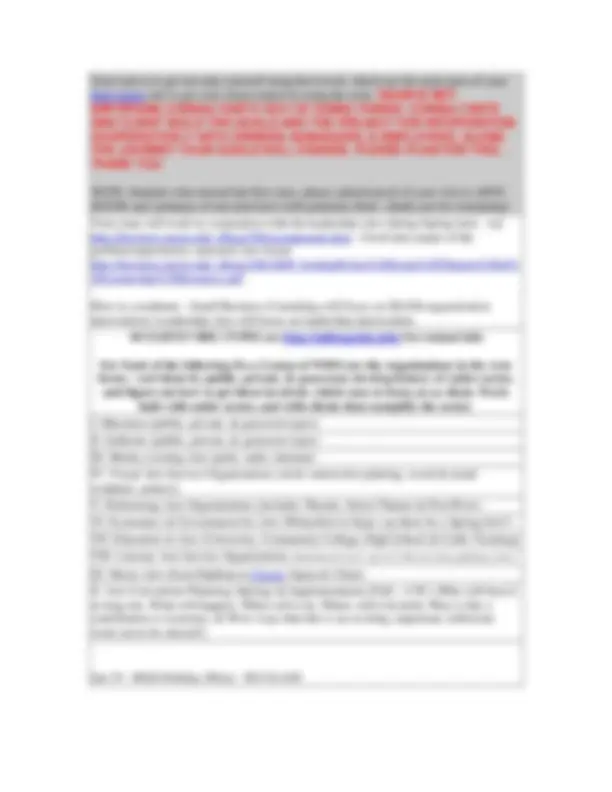
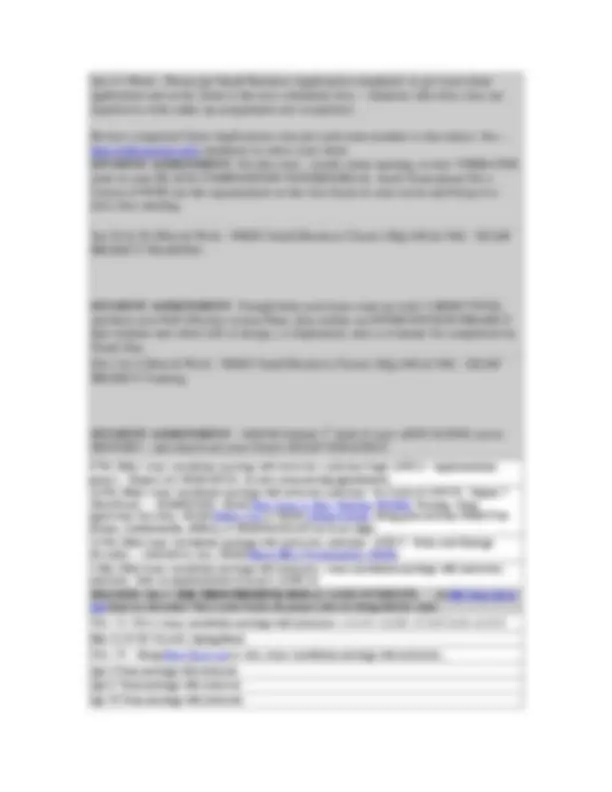
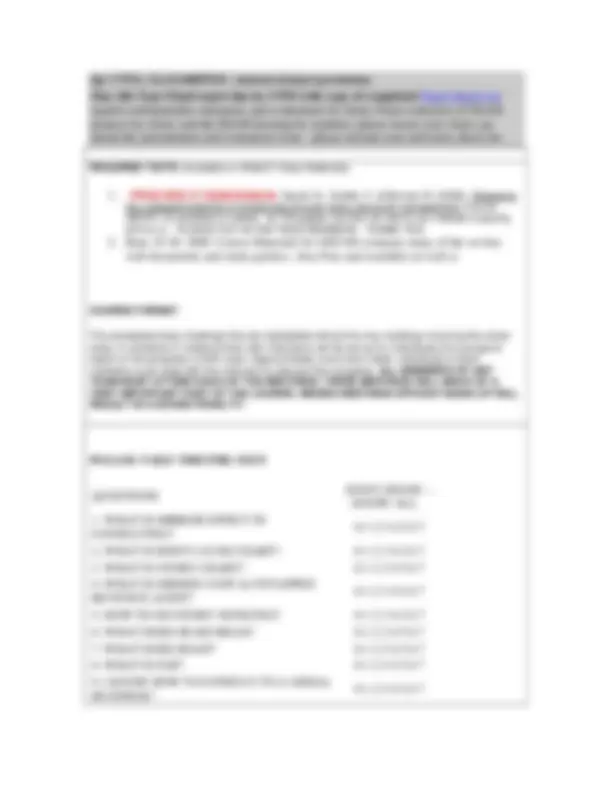
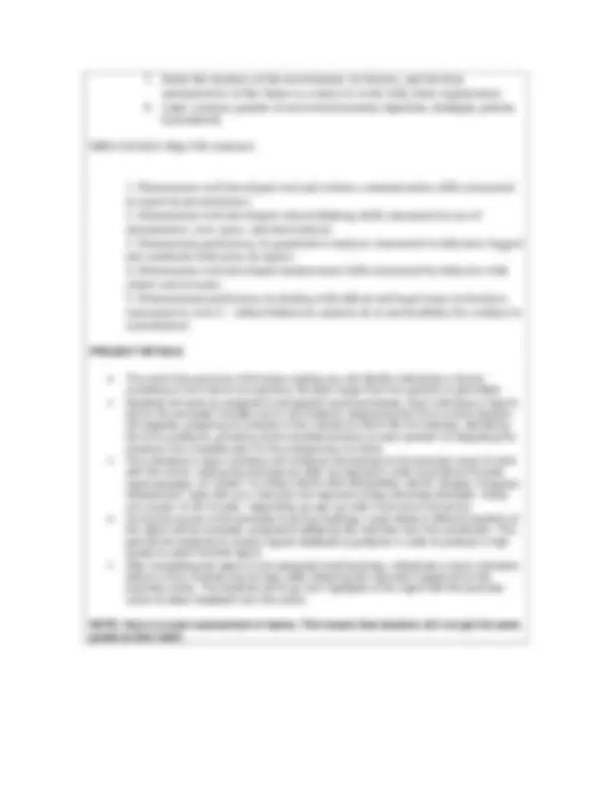
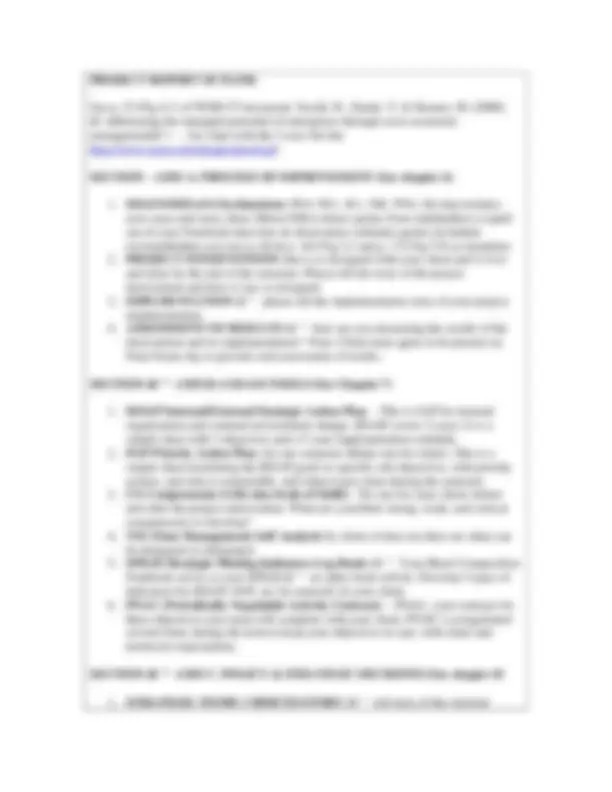
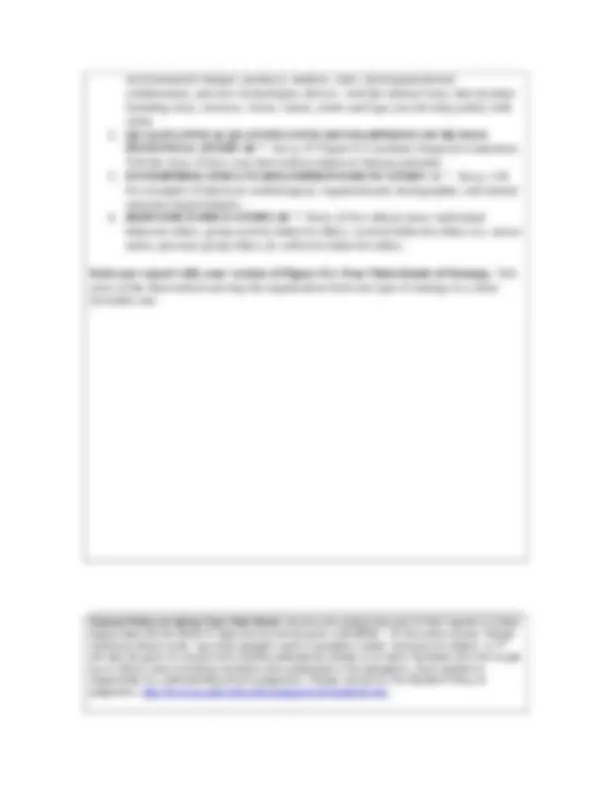


Study with the several resources on Docsity

Earn points by helping other students or get them with a premium plan


Prepare for your exams
Study with the several resources on Docsity

Earn points to download
Earn points by helping other students or get them with a premium plan
Community
Ask the community for help and clear up your study doubts
Discover the best universities in your country according to Docsity users
Free resources
Download our free guides on studying techniques, anxiety management strategies, and thesis advice from Docsity tutors
Material Type: Notes; Professor: Boje; Class: Small Business Consulting; Subject: MANAGEMENT; University: New Mexico State University-Main Campus; Term: Spring 2009;
Typology: Study notes
1 / 12

This page cannot be seen from the preview
Don't miss anything!







Develo
SEAM is Socio Economic Approach to Management. SEAM is most advanced approach to Small Business consultation in the world. NMSU is one of the only US Universities to be authorized by Memorandum of Understanding with ISEOR France (University 3 of Lyon France) to train you in SEAM.
If you would like to go to France Summer I and get more advanced SEAM training (& credit for 2 NMSU courses), contact professor Boje for details.
David M. Boje, Ph.D. Office: BC 318 Home: 532- 1693
OFFICE HOURS: 12:30 to 2 PM Mon in Frenger Food Court (new Dynasty) Otherwise by appointment; Just after class is also good time
Assistant:
Teaching Assistant: TBA
Talking Stick Assistant:
Joe Gladstonemailto:joeg@nmsu.edu
Course details are at Small business Tool box is at http://business.nmsu.edu/~dboje/sbc/sbc.html & http://business.nmsu.edu/~dboje/448/ Syllabus is at http://business.nmsu.edu/~dboje/448/448template.htm WebCT has the required COURSE SEAM MANUAL for you to print out. Start with SEAM overview http://web.nmsu.edu/~dboje/TDseam.html - required & There is are slides online of topics we cover in class http://business.nmsu.edu/~dboje/448/SEAM2.htm to give you overview Small Business Consulting Service CLIENT APPLICATION http://business.nmsu.edu/~dboje/448/SBAAssistanceApplication.htm and in WebCT Class Materials (Due by 2nd class meeting). (e.g., Artist business; arts service organization; galleries or museums) at http://talkingstick.info/
Schedule Monday & Wed Classes - gray boxes are required classes - white boxes are required team meetings with instructors (20 minutes each) Jan 14 (Wed) - We have a great learning event -- please select clients for organizations listed at http://talkingstick.info and Please visit them and Give them SMALL BUSINESS APPLICATION and invite them to our next class event.
Introduction to course http://business.nmsu.edu/~dboje/448/ ;
Homework for next class : proof of visit to one event in Arts Scene as you begin to study history of Arts Scene: 1st Fri each month is ARTS RAMBLE on downtown mall 5 - 7PM; every Wed/Sat mornings (8-noon) is Crafts Market & every Sunday/Thurs is Mesilla outdoor market! (Thurs) 11 a.m.-4 p.m.; (Sun) 12-4 p.m. Or set up your own contact - databases at http://talkingstick.info/
TONIGHT: Boje will introduce you to 6 SEAM Tools you will use with with the clients. This is AXIS B for chart with the 3 axes On line http://www.iseor.com/images/prse4.gif - and please print and use the online 6 TOOLS Examples - Boje or the PDF version
Jan 21 (Wed) - Please get Small Business Application completed - to get your client application and invite client to the next scheduled class -- Students who miss class are required to write make up assignments (no exceptions)
Review competed Client Applications (one per each team member is due today). See -- http://talkingstick.info/ databases to select your client STUDENT ASSIGNMENT : For this class - results client meeting, review VERBATIM notes in your BLACK COMPOSITION NOTEBOOKS & ; Each Team please Do a Census of WHO are the organizations in the Arts Scene in your sector and bring it to next class meeting.
Jan 26 & 28 (Mon & Wed) - NMSU Small Business Classes (Mgt 448 & 548) - SEAM PROJECT TRAINING
STUDENT ASSIGNMENT : Tonight help each team come up with 3 OBJECTIVES, and their own PAP (Priority Action Plan), plus outline an INTERVENTION PROJECT that students and client will co-design, co-implement, and co-evaluate for completion by Finals Day.
Feb 2 & 4 (Mon & Wed) - NMSU Small Business Classes (Mgt 448 & 548) - SEAM PROJECT Training
STUDENT ASSIGNMENT : 448/548 Submit 1st^ draft of your ARTS SCENE sector- HISTORY - and sketch out your Client's IESAP STRATEGY
9 Feb (Mon) :team consultation meetings with instructors; milestone:begin AXIS A - implementation project - Chapter 6 of SEAM BOOK- we have team meeting appointments 16 Feb (Mon): team consultation meetings with instructors;milestone: Do 6 tools of AXIS B - Chapter 7 SEAM book --- HOMEWORK: SEAM Root Cause & Story Charting; PRISMA Training; Client application due today; SEAM Hidden Cost & SEAM Coding training ; Bring print out from WEBCT for Prisma, Confidentiality, BMAQ, & SEAM BOOKLET (or be on stage) 23 Feb (Mon) team consultation meetings with instructors;:milestone - AXIS C - Policy and Strategic Decisions -- codebook to class; SEAM Mirror Effect Psychoanalytic-SEAM; 2 Mar (Mon) team consultation meetings with instructors;: team consultation meetings with instructors; milestone: work on implementation of project (AXES A) REQUIRED: Mar 9: MID TERM PRESENTATION of 3 AXES OF REPORT†“ all Mid Term Check List items are due today! This is your 6 tools, the project your are doing with the client.
Mar 16 (Mon) team consultation meetings with instructors; review results of mid-term review
Mar 23-29 NO CLASS ) Spring Break
Mar 30 -- Bring Final Check List to class; team consultation meetings with instructors;
Apr 6 Team meetings with instructor Apr13 Team meetings with instructor Apr 20 Team meetings with instructor
Apr 27 FULL CLASS MEETING - rehearsals of project presentations May 4th Your Final report due by 5 PM with copy of completed Final Check List signed confidentiality statement, and evaluations by client; Final evaluation of SEAM projects by client, and the SEAM learning by students; please insure your client can attend the presentation and evaluation event - please include your mid-term check list.
REQUIRED TEXTS (Available on WebCT Class Materials)
COURSE FORMAT
The scheduled class meetings that are highlighted will be the only meetings involving the entire class. A schedule of meeting times with instructors will be set up for individuals &/or groups to report on the progress of their case. Approximately once every week, individuals or team members must meet with the instructor to discuss their progress. ALL MEMBERS OF ANY TEAM MUST ATTEND EACH OF THE MEETINGS. THESE MEETINGS WILL MAKE UP A VERY IMPORTANT PART OF THE COURSE. MISSED MEETINGS WITHOUT MAKE UP WILL RESULT IN A GRADE PENALTY!
sleeping, wedding, etc.) owe a 2-page makeup assignment based on the web links in schedule for day you missed. Deduct 10% of final grade for any outstanding makeups.
TEAM POLICY: Each team will do a 360 peer review. Those peer reviews will weight the final grade, and can lower individual team member's grades. The client also does a final assessment of your project, which weights the final grade. The instructor uses judgment in determining how it is weighted. if you have a problem team member, the team may elect to fire them. The fired team member can be picked up by another team, or do their own independent project. Please fire early, to leave individual sufficient time to move along in their growth and development.
INTRODUCTION: Bring back small business. Between 1865 and WWI, and again in 1990s, "Small Businesses were replaced by rigidly hierarchical and authoritarian industrial organizations that relied on the cheap and plentiful [sweatshop] labor supplied to new waves of immigration" and in far flung global supply chains (Hellinger & Judd, 1991: 24, †˜ The Democratic Façade†™; Brooks Cole Publishing). Table 1 presents alternatives to rigid hierarchical authoritarian leader styles, and relates this to the SEAM methodology of small business consulting. Table 1 is for students who have had the Mgt388G course from Boje:
The main Leadership IN THE BOX/OUT OF THE BOX web site is at http://business.nmsu.edu/~dboje/388 and SEPTET http://business.nmsu.edu/~dboje/septet/ For application see Enron Metatheatre website at http://business.nmsu.edu/~dboje/enron/
COURSE OBJECTIVES
MBA GOALS (Mgt 548 students)
PROJECT DETAILS
The end of the second or third class meeting you will identify individuals or teams consisting of from two to four persons. No team larger than four persons is permitted. Students will work as assigned to aid specific local businesses. Each individual or team's job for the semester includes, but is not limited to, diagnosing the firm's current situation (all aspects), preparing an analysis of the industry to which the firm belongs, identifying the firm's problems, providing recommended solutions to each problem & integrating the solutions into a feasible plan for the entrepreneur to follow. The individual or team members will introduce themselves to the business owner & work with the owner, visiting the premises as often as required in order to produce the best report possible. AT LEAST 10 (TEN) VISITS ARE REQUIRED. NOTE: Weekly "Progress Assessment" visits with your instructor are required (unless otherwise directed). These are usually 15-20 minutes - depending up sign up order (first come first serve). During the course of the semester & during meetings, rough drafts of different sections of the report will be reviewed, analyzed & edited by the instructor &/or the coordinator. This permits the students to receive regular feedback & guidance in order to produce a high quality & useful finished report. After completing the report on the assigned small business, individuals or team members deliver a final, finished, bound copy (after obtaining the instructor's approval) to the business owner. The students are to go over highlights of the report with the business owner & obtain feedback from the owner.
NOTE: there is a peer assessment of teams. This means that slackers will not get the same grade as their team.
environmental changes: products, markets, rules, interorganizational collaboration, and new technologies choices. And the internal story, that includes founding story, mission, vision, values, motto and logo you develop jointly with client
End your report with your version of Figure 8.1: Four Main Kinds of Strategy. Tell story of the intervention moving the organization from one type of strategy to a more favorable one.
Course Policy on doing Your Own Work: Anyone who plagiarizes part of their reports or enters bogus data into the Web CT data archive will be given a †œF†• for the entire course. Please reference others' work, "put other people's work in quotation marks" and give full citation. A "F" will also be given for anyone who falsifies attendance sheets or for team members who fain to get by on others' work (including members who collaborate in the deception). Each student is responsible for understanding what is plagiarism. Please consult on line Student Policy on plagiarism. http://lib.nmsu.edu/instruction/plagiarismforstudents.htm
Course Policy regarding Cell Phones. Turn off cell phones and pagers during class time (each violation lowers your grade by one unit). Do not accept or place calls or text message during class time (no exceptions). 1st^ offense is volunteering in Boje†™s improv theatre training; repeated offense will lower one grade.
505.646.3635 with any questions you may have about NMSU's Non-Discrimination Policy & complaints of discrimination, including sexual harassment. Call the Coordinator of Services for Students with Disabilities at 505.646.6840 regarding student issues related to the Americans with Disabilities Act (ADA) and/or Section 504 of the Rehabilitation Act of 1973. All medical information will be treated confidentially.
GOAL OF THE SMALL BUSINESS INSTITUTE (SBI): The goal of the SBI program is completion of a report intended to assist entrepreneurs. We will hold two no cost SBI†™s during the term. Their purpose is to help small businesses work on strategy that will enable them to become more economically viable. This helps to build the economic health of New Mexico.
CLIENTS: Clients of the SBI program should be owners or owner/managers of small business as defined by the Small Business Administration. Occasional exceptions are allowed with the approval of the SBA & the instructor.
FINAL REPORT & CLIENT RAPPORT: Three copies of the final report are required. The report should contain a plan for implementing the recommendations made to ease identified problems. It is neither the responsibility nor the intention of the student, the instructor, the university, SCORE or SBA to force the entrepreneur to take this advice. The advice must be "sold," like any other product/service, to the consumer client. This selling process will be ongoing during the semester as the students interact with the entrepreneur. The rapport between consulting students & consumer clients will have a significant effect on whether or not the advice will be taken. IT IS THE STUDENT'S RESPONSIBILITY TO MAKE EVERY EFFORT AT DEVELOPING & MAINTAINING A GOOD RAPPORT WITH THE CONSUMER CLIENT.
SELECTION: Most clients are referred to the SBI program by the SBA, SCORE, NMSU's Small Business Assistance Program, the local banks & other institutions dealing with small business owners. All clients must sign an agreement to participate in the program & to hold the university & the SBA harmless for the report's recommendations. The instructor gives this form to the clients before students are assigned to the case.
CONFIDENTIALITY: The relationship between the client & the consultant requires complete confidentiality. Students will not discuss a case with anyone outside of the class. This confidentiality matter will be fully discussed in class.
RESPONSIBILITIES
Clients o Clients do have responsibilities, among which are to fully & actively cooperate with the students in providing relevant information about the business & the owner/manager or key employees. Such relevant information includes financial statements, educational & experiential backgrounds, motivations for opening the business, goals & objectives of the business & known or suspected problems. If a cooperation problem with the client arises, it will be the students' responsibility to inform the instructor immediately. Waiting until the end of the semester will be too late to correct the problem o Finally, clients will be asked to evaluate the student team & the value of the report to the client & the business.